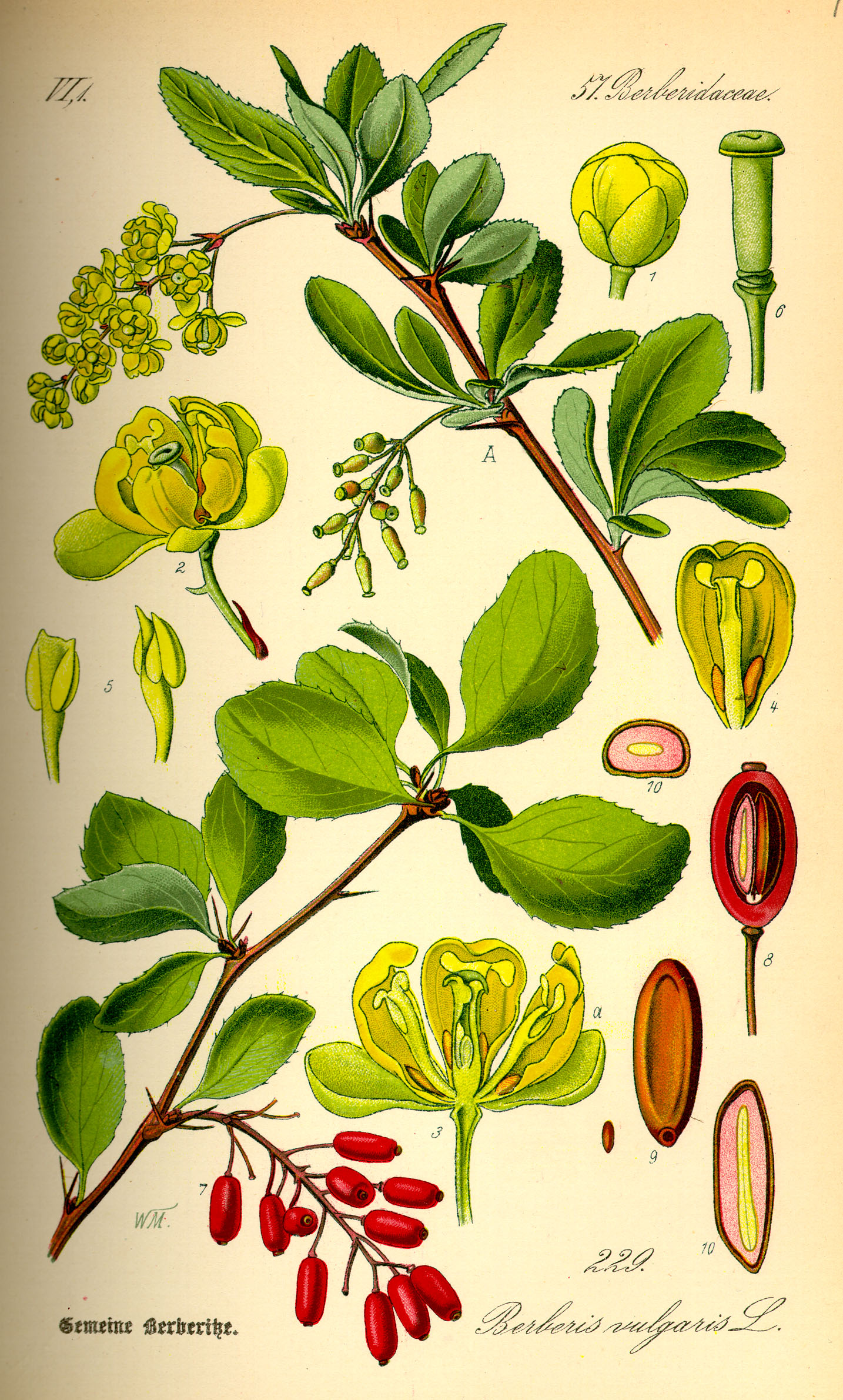Dr Clare Materia Medica
Introduction to the Dispensing of Dr Clare’s Blended Herbs
Special | A | B | C | D | E | F | G | H | I | J | K | L | M | N | O | P | Q | R | S | T | U | V | W | X | Y | Z | ALL
B |
|---|
Berberisvulg
Scientific name: Berberis vulgaris Family: Berberidaceae. Traditiona Uses: Orally, the fruit of European barberry is used for kidney, urinary tract, and gastrointestinal tract discomforts such as heartburn, stomach cramps, constipation, lack of appetite, liver and spleen disease, for bronchial and lung discomforts, spasms, as a stimulant for circulation, for people susceptible to infection, and as a supplemental source of vitamin C. The bark, root, and root bark of European barberry are also used orally for ailments and complaints of the GI tract, liver, gallbladder, kidney and urinary tract, respiratory tract, heart and circulatory system, to lower a fever, "blood purifier", and for narcotic withdrawal. European barberry root bark is used for liver dysfunction, gallbladder disease, jaundice, splenopathy, diarrhea, indigestion, hemorrhoids, renal and urinary tract diseases, gout, rheumatism, arthritis, mid and low back pain, malaria, and leishmaniasis. Safety: Traditionally used as a fruit syrup and preserve.when the fruit is consumed orally in food amounts
Evidence from Scientific Research Very little clinical research has been done. Dental Plaque: Preliminary clinical research suggests that brushing with a European barberry extract gel containing 1% berberine three times daily for 3 weeks significantly reduces plaque index compared to placebo and has similar effects compared to a commercial antiplaque toothpaste (Colgate) Diabetes. Small studies suggests that taking European barberry for 8 weeks does not affect blood sugar control in patients with type 2 diabetes How might it work: The applicable parts of European barberry are the fruit (berry), root, bark, and root bark. Preliminary research suggests that European barberry fruit has antihistaminic and anticholinergic effects Preliminary research suggests berberine might inhibit bacterial sortase, a protein responsible for anchoring gram-positive bacteria to cell membranes. Preliminary clinical research suggests it might be useful for topical treatment of burns and trachoma, a common cause of blindness in developing countries. Unwanted effects: Orally, the use of European barberry and other berberine-containing herbs during pregnancy, lactation, or in newborn infants can cause jaundice as the infant have not yet the capacity to metabolise berberine. No adverse reactions have been reported for berberis vulgaris and no clinical studies have been done. In traditional use it is well tolerated. Berberine, a primary constituent of European barberry, has been used orally in adults in doses up to 2 grams/day for 8 weeks with no adverse effects reported Interactions with drugs/supplements: Anticoagulants/antiplatelet drugs: No reported cases of blood clotting problems have been reported with this herb. However Berberine, one of the many constituents of European barberry, may inhibit platelet aggregation in animal studies so caution is advised. Blood sugar control: Clinical study demonstrated no blood sugar lowering effect, but advise monitoring for diabetics as theoretically a lowering of blood sugar is possible. Lowering Blood Pressure: Theoreticall an effect of lowering blood pressure may add to the therapeutic effect of medication, as a precaution remain seated or lie down for 30 minutes after the first 2-3 doses and monitor effect. Transplant antirejection Cyclosporin A (CsA): The constituent Berberine can markedly elevate the blood concentration of CsA in renal-transplant recipients in both clinical and pharmacokinetic studies. This combination may allow a reduction of the CsA dosage. The mechanism for this interaction is most likely explained by inhibition of cytochrome CYP3A4 in the liver and/or small intestine. CYP3A4 Metabolised Drugs: Theoretically blood levels can be elevated or lowered. Common drugs include the SSRI antidepressants, Some Statins (lovastatin), some antibiotics, for full list see http://www.pharmacytimes.com/publications/issue/2008/2008-09/2008-09-8687 Effect on lab. tests: Theoretically, European barberry might increase bilirubin levels. This has been demonstrated with isolated berberine constituent, but not specifically with European barberry. Berberine displaces bilirubin from albumin and increases total and unbound bilirubin concentrations. Effect on conditions or disorders: BLEEDING DISORDERS: Berberine, a constituent of European barberry, might inhibit platelet aggregation. Theoretically, European barberry might increase the risk of bleeding and interfere with therapy in patients with bleeding conditions. Dose: ORAL: No typical dosage. Traditionally, a typical dose is one cup tea.To make tea, steep 1-2 teaspoons of whole or squashed berries in 150 mL boiling water 10-15 minutes and strain or steep 2 grams of root bark in 250 mL boiling water 5-10 minutes and strain. Root bark is typically used as a tincture (1:10), 20-40 drops per day. | |

 Also known as
Also known as